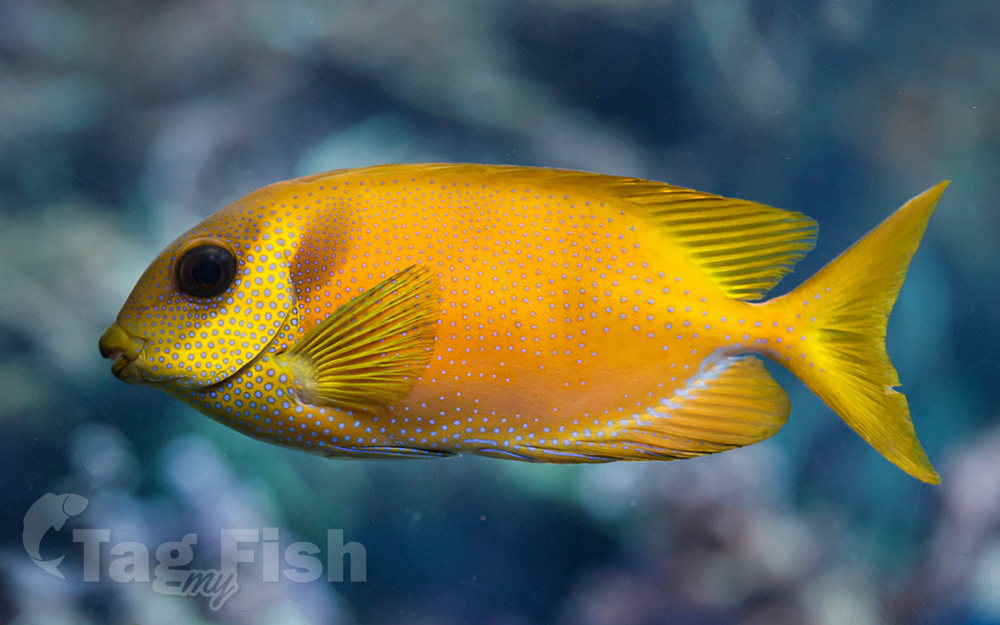Blue-spotted spinefoot
(Siganus corallinus)

Classification
General data
The blue-spotted spinefoot has a deep and compressed body with a standard length which is around twice its depth. The dorsal profile of its head has an incline of around at 45°. There is an indentation on front of the eyes and another behind the chin which makes the snout obviously protrude. There is a forward pointing spine in front of dorsal fin. The caudal fin is emarginate in juveniles with a standard length of less than 5 cm (2.0 in)but it becomes more forked with age so that it is deeply forked in subadults, the lobes of the caudal fin are sharply pointed. The dorsal fin has 13 spines and 10 soft rays while the anal fin has 7 spines and 9 soft rays.
This species attains a maximum total length of 30 cm (12 in), although 20 cm (7.9 in) is more typical.
The overall colour of this rabbitfish is orange-yellow marked with small blue spots on the head, breast and flanks, with a dark smudge-like mark surrounding the eye. Small juveniles have slender blue vertical lines on the flanks that break up into spots as they grow.
The blue-spotted spinefoot has a widespread Indo-West Pacific distribution. It occurs from the western Indian Ocean, where it is apparently restricted to oceanic archipelagoes such as the Seychelles and Maldives, to the western Pacific Ocean, where it occurs from the Ryukyu and Ogasawara Islands, east to New Caledonia and Vanuatu and south to Australia.
In Australia is found at Rowley Shoals and Scott Reefs off Western Australia, the Ashmore Reef in the Timor Sea and on the northern Great Barrier Reef as far south as the Capricorn Islands off Queensland, it also occurs at Christmas Island.[8] It is found at depths between 1 and 30 m (3 ft 3 in and 98 ft 5 in) in coral reefs, with the juveniles in sea grass beds.










